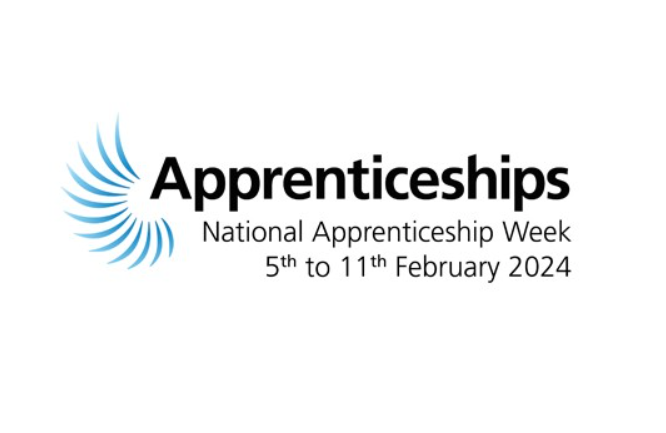Let’s highlight National Apprenticeship Week!

National Apprenticeship Week provides a platform for apprentices and organisations to highlight how apprenticeships can support individuals, businesses and the wider economy.
Running from the 5th to 11th of February in England, Northern Ireland, and Wales and then from 4th to 8th of March in Scotland, the week helps to illustrate the ways in which apprenticeships can benefit not only staff, but also the businesses involved.
The theme for National Apprenticeship Week 2024 is ‘Skills For Life’. This is an opportunity for individuals, employers, training providers and others to get involved by encouraging everyone to understand how apprenticeships can help to support the growth and development of individuals and businesses in the UK seafood industry. There will be personal stories from apprentices and employers about their own experiences and journeys and why apprenticeships provide #SkillsForLife.
Currently, there are labour shortages in many parts of the seafood industry. If you are struggling to recruit staff, then offering a suitable apprenticeship alongside the vacancy might tip the balance for you and attract more suitable applicants. Offering an apprenticeship to existing employees may help to retain valuable members of the team.
Having an apprentice onboard can make a big difference to a business. It can help to motivate other members of staff to get involved in training or even to become an apprentice themselves.
By working in partnership with sector employers within hospitality and management, we see the impact of apprenticeships every day. At HIT Training, we deliver quality people-led training that improves employees’ skills, increases efficiency, enables innovation and boosts your bottom line.
Our mission is to transform lives, shape futures and create income opportunities that allow business leaders to reach their full potential and acquire essential ‘skills for life’.

Questions and queries around apprenticeships
There are many aspects of apprenticeships which can be misunderstood, and this selection of frequently asked questions will help to answer some common queries:
What is an apprenticeship?
An apprenticeship is a funded structured development programme job that allows a person to benefit from formal training whilst working.
How long does it take to complete an apprenticeship?
This can depend upon the level of the apprenticeship. A typical operative/team leader apprenticeship will take between 12 to 18 months, whilst a supervisor/manager apprenticeship may last up to 24 months.
Who is responsible for delivering the apprenticeship?
The employer monitors the delivery of the apprenticeship programme by their apprenticeship provider. The apprenticeship provider is responsible for providing the training. The assessment of the apprentice’s skills and knowledge is a key part of any apprenticeship.
There are differences in the details of how apprenticeships are delivered between England and other parts of the UK. Your local apprenticeship provider can provide advice on this.
What age limits apply to apprenticeships in the UK?
There is no upper age limit for access to an apprenticeship although there may be limits on funding. Offering an apprenticeship to older workers may significantly improve employers’ success in retaining and recruiting staff.
How much are apprentices paid?
Employers are encouraged to pay more than the required minimum wage as apprentices should be seen as a valuable resource for the business and this can help with retention, staff loyalty and as encouragement for others to also take up apprenticeships when available.
How many hours a week does an apprentice work?
Usually, they work a minimum of 30 hours a week, but no more than 40 hours in a single week. Apprentices working part time will take longer to complete their apprenticeship programme.
Are apprentices entitled to holidays?
As apprentices are usually full time employees of the business they have the same employment conditions as other employees, although there may occasionally be age-related conditions for younger apprentices.
Does an employer have to employ an apprentice when they have concluded their apprenticeship?
Apprentices may be employed on a fixed term contract lasting until the end of their apprenticeship. Most apprentices are recruited to fill a permanent job role and will stay with their employer long after completion of their programme.
Once an apprentice has completed their programme, they are likely to be a highly competent and valuable member of your workforce, and someone you would be well advised to retain.
Can an apprentice help my business?
The answer is a resounding yes. A well delivered apprenticeship programme will not only fill vacant job roles but will bring valuable skills and knowledge into the business.
Apprenticeships offer an employer the opportunity to make a real positive difference to their business and the lives of individuals. By recruiting an apprentice, you are giving a person a chance to develop their own skills and knowledge and to contribute to the success of your business.
You may also be embarking on your first experience of a formally structured development programme. This will see external training brought into the business as well as opportunities for you and your team to coach someone as they pass on your skills and understanding too.
Further information
For further information about apprenticeships, please visit our Seafood business apprenticeships webpage using the link below:
You can find out more about National Apprenticeship Week 2024 by visiting the websites using the external links below: